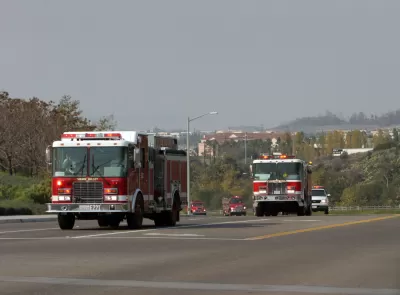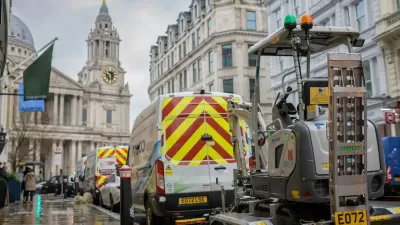The ear-piercing sirens used by emergency vehicles are shown to have little impact on patient outcomes while contributing to more dangerous road conditions, experts say.

Some experts are questioning the effectiveness of sirens and lights for emergency vehicles, noting that "[s]tudies have found that the time saved responding to medical calls by relying on lights, sirens and speed is not meaningful in most cases." As Christopher Mele reports, the overuse of sirens "can be a force multiplier for more harm than good."
Research has found that "[e]mergency drivers are more likely to engage in risky behavior when they use lights and sirens," while "other drivers sometimes respond in unpredictable ways," creating dangerous conditions that can lead to crashes. In fact, "an average of 4,500 such accidents occurred annually from 1992 to 2011, resulting in an average of 33 deaths and injuries to 2,600 people each year."
As far as their effectiveness at reaching patients, "the use of lights and sirens has been shown to have little bearing on patient outcomes," saving "an average of 42 seconds to three minutes off a trip to the scene of a call. According to Dr. Douglas F. Kupas, E.M.S. medical director for Geisinger E.M.S. in central Pennsylvania, "[m]ost of the things that are time-dependent are a very tiny minority of the E.M.S. calls." With consistent exposure to sirens, EMS workers "can suffer premature hearing loss," while patients "can be stressed by the noise."
FULL STORY: Sirens: Loud, Ineffective and Risky, Experts Say

Maui's Vacation Rental Debate Turns Ugly
Verbal attacks, misinformation campaigns and fistfights plague a high-stakes debate to convert thousands of vacation rentals into long-term housing.

Planetizen Federal Action Tracker
A weekly monitor of how Trump’s orders and actions are impacting planners and planning in America.

Chicago’s Ghost Rails
Just beneath the surface of the modern city lie the remnants of its expansive early 20th-century streetcar system.

Bend, Oregon Zoning Reforms Prioritize Small-Scale Housing
The city altered its zoning code to allow multi-family housing and eliminated parking mandates citywide.

Amtrak Cutting Jobs, Funding to High-Speed Rail
The agency plans to cut 10 percent of its workforce and has confirmed it will not fund new high-speed rail projects.

LA Denies Basic Services to Unhoused Residents
The city has repeatedly failed to respond to requests for trash pickup at encampment sites, and eliminated a program that provided mobile showers and toilets.
Urban Design for Planners 1: Software Tools
This six-course series explores essential urban design concepts using open source software and equips planners with the tools they need to participate fully in the urban design process.
Planning for Universal Design
Learn the tools for implementing Universal Design in planning regulations.
planning NEXT
Appalachian Highlands Housing Partners
Mpact (founded as Rail~Volution)
City of Camden Redevelopment Agency
City of Astoria
City of Portland
City of Laramie





























